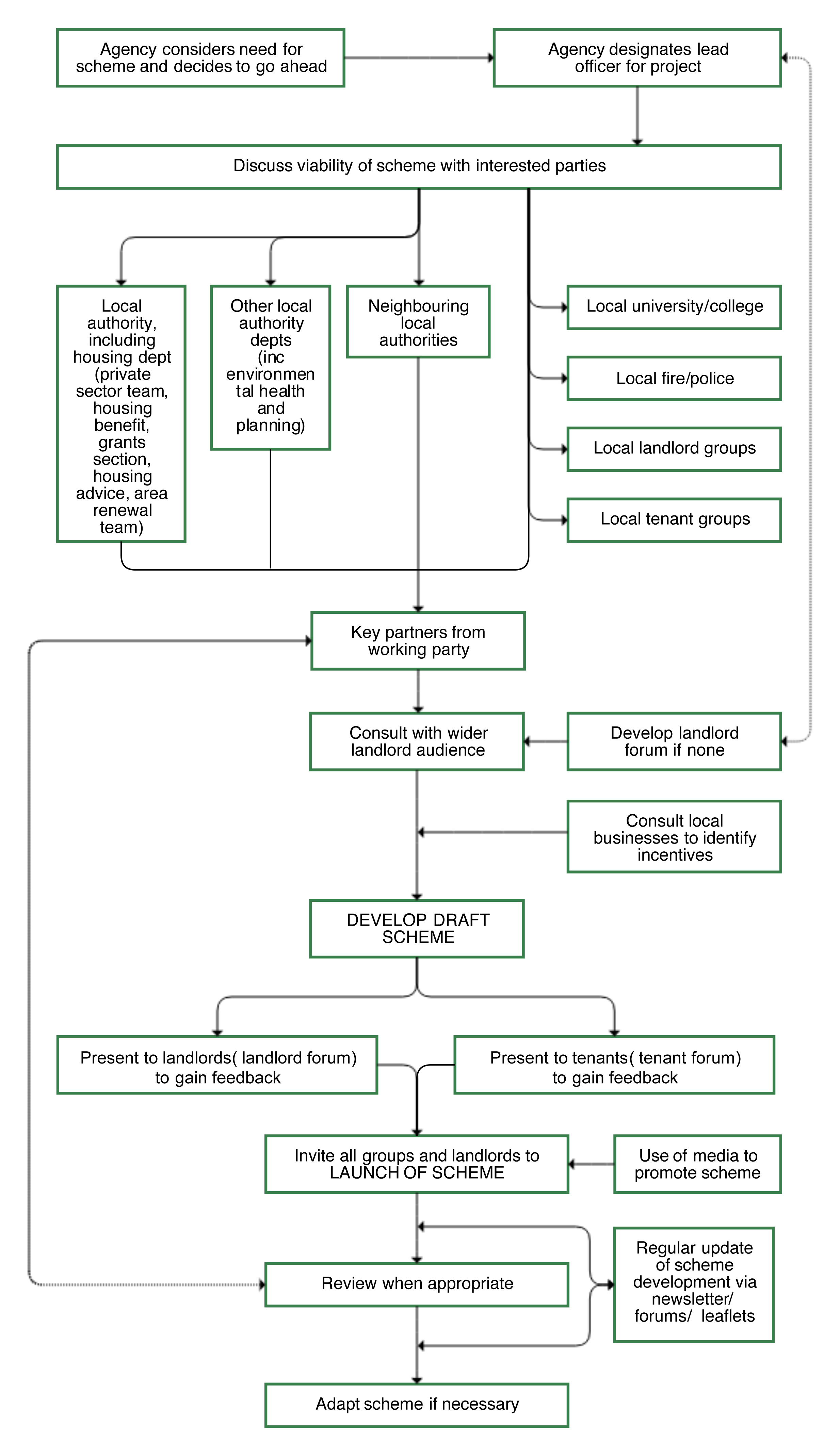The schedule and flow chart below summarise the processes for developing an accreditation scheme and have been taken from the Accreditation Handbook.
The main steps to launching an accreditation scheme are:
- recognising the need for a scheme
- appointing a project lead
- investigating the feasibility of a scheme with or within the local authority, including:
- private sector team
- grants section
- housing advice
- area renewal team
- consulting with a wide range of bodies, or better still, working in partnership with them to develop the main features of a scheme, including, for example:
- local authority
- local landlord group(s)
- local tenant group(s)
- local higher education institution(s)
- local fire and police services
- neighbouring local authorities
- developing a landlord forum if none exists
- forming a working group with key partners
- consulting with landlords more generally about their views on accreditation and producing a draft scheme
- consulting with local businesses to develop incentives
- networking with other scheme operators
- considering using other schemes as a basis for the scheme design, including the ANUK landlord and tenant model accreditation scheme
- determining whether or not to levy a scheme membership fee towards running costs
- developing the draft scheme
- presenting to landlords and tenants and other significant constituencies
- amending the scheme further in consideration of the feedback
- securing firm agreement to final scheme design
- appointing staff to run the scheme
- developing detailed administrative systems and procedures
- procuring equipment and other infrastructural support as necessary
- launching the scheme and publicising it as actively as possible
- reviewing the scheme at intervals: quickly, in order to ensure it is on track and to make minor amendments if necessary; after some time review its performance against objectives
